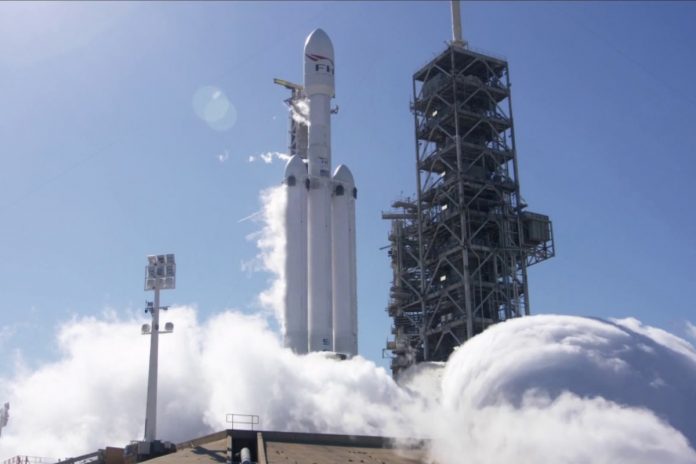SpaceX is ready to deploy a military satellite for the Republic of South Korea. The Army/Navy/Air Force Satellite Information System, ANASIS-II, satellite will launch atop a Falcon 9 rocket from Space Launch Complex 40 [SLC-40] at the United States Air Force Station in Cape Canaveral, Florida. The mission is scheduled for July 14th at 5:00 p.m. Eastern Time. Today, July 11, SpaceX announced it completed a static-fire test of the previously-flown Falcon 9 rocket that will deploy ANASIS-II into orbit
“Static fire test complete – targeting July 14 for Falcon 9 launch of ANASIS-II from SLC-40 in Florida.”
A static-firing, involves the brief ignition of the rocket’s nine Merlin 1D engines. Engineers fueled the rocket with rocket grade kerosene and liquid oxygen, then ignited all engines for a few seconds while the rocket was grounded to Launch Pad 40 with hold-on clamps. The test is a routine pre-flight preparation which gives engineers insight on whether the rocket is ready to take flight. The successful static-fire-test gets SpaceX closer towards launch day next week.
The previously-flown Falcon 9 first-stage booster that will be used for this mission is special, because it propelled NASA astronauts aboard the Crew Dragon spacecraft for the first time to the International Space Station on May 30th – “The booster supporting this mission previously launched NASA astronauts Robert Behnken and Douglas Hurley to the Space Station,” the company shared.
Soon after deploying Crew Dragon, the rocket booster, production number B1058, landed on the Of Course I Still Love You autonomous drone ship at the Atlantic Ocean. The aerospace company is currently the only in the world that has achieved landing orbital-class rockets over 50 times. Falcon 9’s first-stage is capable of launching a payload to space and returns to land vertically on an autonomous drone ship at sea. SpaceX recovers and reuses rockets in order to reduce the cost of spaceflight. Booster B1058 has been refurbished and will now conduct its second flight, the ANASIS-II mission for South Korea. SpaceX will attempt to recover the booster again. This time, with the company’s second autonomous landing pad called Just Read The Instructions, that will be stationed in the Atlantic Ocean about 628-kilometers downrange.
The booster supporting this mission previously launched @NASA astronauts @AstroBehnken and @Astro_Doug to the @Space_Station pic.twitter.com/ora2YkeP2K
— SpaceX (@SpaceX) July 11, 2020
The ANASIS-II satellite was manufactured by Airbus Defense and Space, it will be operated by South Korea’s Agency for Defense Development. ANASIS-II arrived to the United States from an Airbus factory located in Toulouse, France. An Antonov An-124 cargo airplane transported it to a SpaceX facility at Cape Canaveral Air Force Station, where teams conducted final preparations.
Falcon 9 is expected to deploy the ANASIS-II satellite into a geostationary transfer orbit. ANASIS- II will use its integrated propulsion system to reach an altitude of around 42,000 kilometers over the equator, where it will operate to provide coverage to the Korean Peninsula over a 6,000-kilometer radius. Not much has been revealed about the satellite’s exact function because it’s a South Korean government mission, all that is known is that the satellite is based on the Eurostar-3000 satellite platform, which can be modified to meet specific requirements by the customer.





























